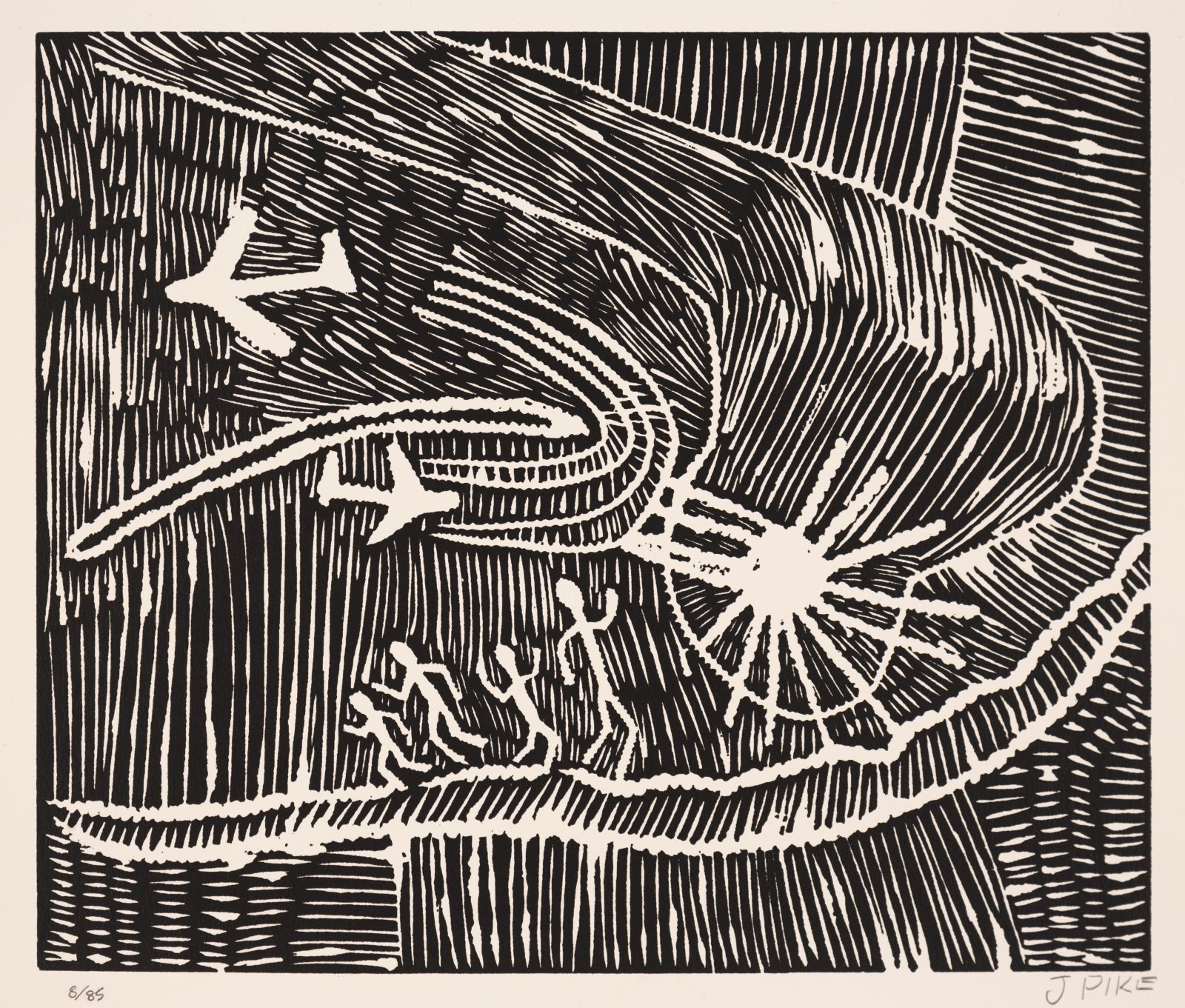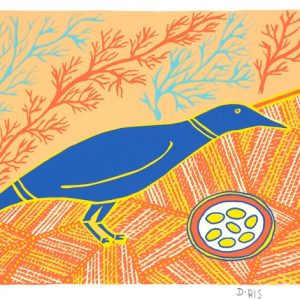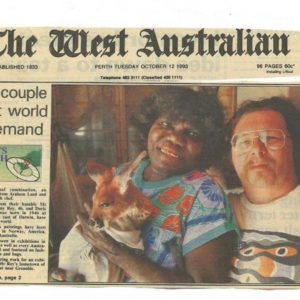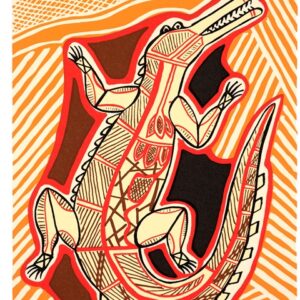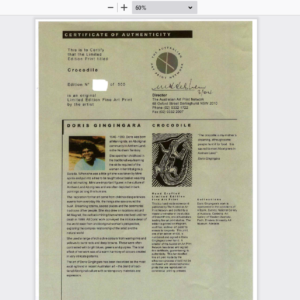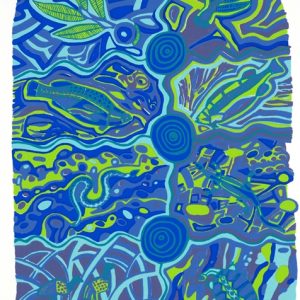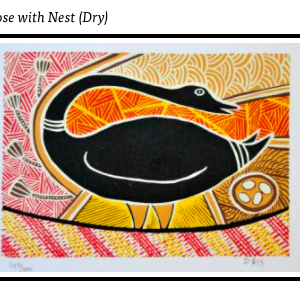Description
Details
- Medium: Screen print
- Size: 330 x 405 (image) and 510 x 670 mm (paper)
- Paper: Black ink on ivory paper
- Edition: 85
- Published: 1985
- Studio: Desert Prints Fremantle
Story
Old time story, not Dreamtime. People story – real one. This is a real story. One day they went hunting near this waterhole. My father went over to Canning Stock Route with other wife, left mother and sister at waterhole. One day they went hunting from waterhole. They make bushfire in thick grass, spinifex. Make big fire, burn big, stand at edge. Little kangaroo and goanna run out. Then they hear noise like dragonfly at swamp. Plane come right into fire and drop something (a bomb) on fire. Mother and children hide under bush and tree. They went back to waterhole. Then they come back they find that place, they find bits of tin from that thing, still there today.
Jimmy Pike
Jimmy Pike Biography
Jimmy Pike was born near Jila Japingka a major waterhole around 400 kilometres south of Fitzroy Crossing in the Great Sandy Desert. Jila are desert soaks that never dry out. The word ‘jila’ is often translated by desert people as ‘living water’, indicating the importance of these sites.
Jimmy Pike first explored felt-pen drawing and linocut printing in the early 1980s. As an inmate at Fremantle Prison, Pike attended art classes organised by Stephen Culley and David Wroth, who would later establish Desert Designs and become collaborators.
In the late 1980s, Pike and Pat Lowe collaborated with director John Tristram to create the documentary The Quest of Jimmy Pike (1990). Filmed at Kurlku, other locations in the Great Sandy Desert and Fitzroy Crossing the documentary captures Pike’s attempts to return to Jila Japingka with members of his family who had not visited this important site for decades. Unable to make the journey by car or on foot, Pike flew there by helicopter across the desert sand hills.
Produced mainly in black and white, Pike’s early linocuts show an artist confidently experimenting with new media to represent his desert country.
Pike carved his lino with uneven zigzag lines a technique similar to carved boab nuts a practice common in the Kimberley region. The deep cutting of Pike’s lino meant that they were often too fragile for subsequent editions; later copies were either produced as screen-prints or not at all, making many of these early linocuts very rare.
In 1986 Jimmy Pike was released on parole to a desert camp with members of his family at Kurlku on the edge of his country in the Great Sandy Desert. That same year Pat Lowe, a British born psychologist who had met Pike in Broome Prison in the late 1970s, joined the artist at Kurlku as his partner and collaborator.
From 1990, until Pike passed away in 2002, the couple were based in Broome, from where they could both visit the desert and travel internationally to attend exhibitions of Pike’s art.
Acknowledgement: AIATSIS

